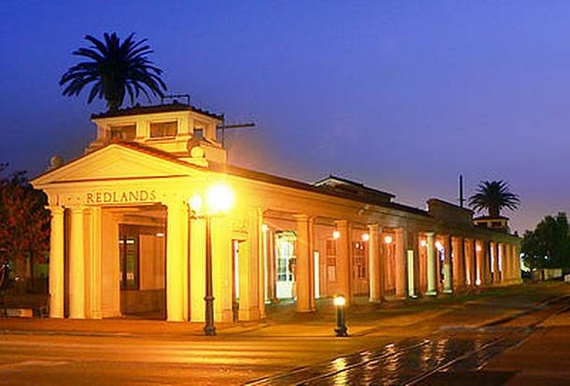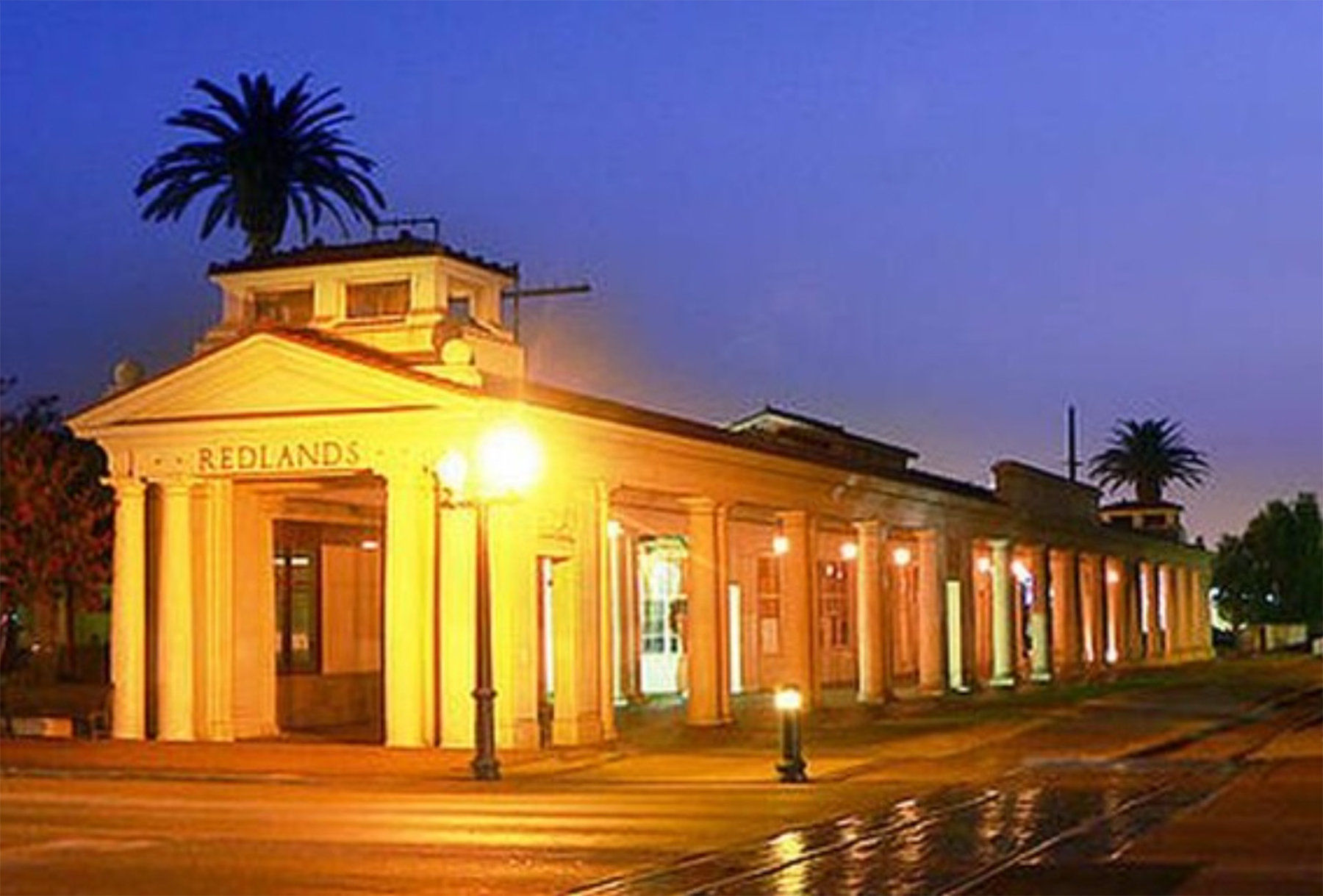One of those things, to be explored this week with our Marketplace partners, involves the complex role of transportation in making, breaking, and refashioning local economies. There will be a lot more to say, in this space and on the radio, about the specific place of railroads in what we think of as the car-based life of Southern California. This include the historic role of the Santa Fe “Kite-Shaped Track,” as shown above, which ran from Los Angeles out to Redlands and whose orange-hauling freight trains were still running when I was growing up. The local station, amazingly, is still preserved and looks like this:

In keeping with the principle that the real goal is to draw connections among developments in different parts of the country, here is John Tierney’s installment on what railroads, and their lack, have meant for prospects in our previous stop at the other extreme of the country, in Eastport, Maine. The interactions between Eastport’s rail situation and its efforts to remake its economy are also part of our upcoming print-magazine article. Now, over to John.]
By John Tierney
You don’t need to have a degree in regional planning to know that transportation modes can make a big difference in the economic vitality of a city.
The small cities visited so far in the American Futures series provide cases in point. We’ve seen what the arrival of the railroads meant for the phenomenal growth of Sioux Falls, South Dakota in the 1880s – and how the greater difficulty of getting rail service into Rapid City, SD, helps explain its historic economic disadvantage, relative to Sioux Falls.
Burlington grew to be the largest city in Vermont because its position on Lake Champlain enabled it to be a center for trade, and when railroad service arrived there, it helped turn Burlington into a busy lumbering and manufacturing center. And some of the most important industries in Holland, Michigan, have thrived over time in part because of that same combined presence of water transport (via Lake Michigan) and rail connections.
A different story emerges from tiny Eastport (population 1330), located on the coast at Maine’s northeastern tip. Unlike the other cities profiled so far, Eastport has seen its population decline over the years; the population now is one-quarter of what it was in 1900. And Eastport has suffered economically to a greater extent than the other cities we’ve looked at. Some of Eastport’s decline and hardship can be traced to its loss, in the 1970s, of a railroad connection.

Maine Central Railroad, which had been losing money on its branch line to Eastport, finally abandoned the line in 1978. The rail service had been important to Eastport in the days when it was home to sardine canneries, but that industry had long since faded, so Maine Central pulled the plug. The trains stopped running, and in 1980 the track was pulled up from the rail bed.
Timing, they say, is everything. The port facility that is now one of Eastport’s chief economic engines was still in the early planning stages in the 1970s. So, when the town had rail service, it lacked a port facility. And now that it has a port facility, it lacks rail service. Eastport has had each, but not both at the same time. Both modes of transportation are required to make Eastport into the kind of heavily trafficked port it aspires to be. Now, as one port observer has noted, “Eastport is just about the only port without a rail connection in the country.”
If people in Maine could go back in time and undo the decision to abandon the rail link to Eastport, they would. But they’re left with the current reality, which is that the impediments to rebuilding the rail line are formidable: the costs would be high, because not only are the tracks gone, but also much of the right-of-way has been sold off, so a new route to the port would have to be found if rail service were to return.
A strong push for finding a way to restore the rail line has been coming for years from the Eastport Port Authority and its allies. The Port director, Chris Gardner, says restoration of the rail line would be “a game-changer” for Eastport and for all of Washington County, Maine’s poorest.
Gardner is probably right about that. Eastport has great natural advantages as a port. The most easterly port of the U.S., at the mouth of the Bay of Fundy on the Canadian border, Eastport is the closest U.S. port to Europe by one day.
But that hoped-for economic revival will be difficult to pull off without a rail link, and some skeptics are not certain that even the presence of rail service would be sufficient to spell a strong rebound for Eastport.

Meanwhile, as efforts continue to restore rail service, the old railroad corridor, like many of its kind around the country, has undergone a rails-to-trail transformation as part of the Downeast Sunrise Trail. Now, visitors and residents use the trail for a full range of outdoor activities like hiking, bicycling, snowmobiling, etc.
Welcome as the trail is, as a regional amenity and as a component of the area’s social-capital mix, the Maine Department of Transportation made it clearwhen drafting its management plan for the corridor, that “the number one priority is to preserve and protect the corridor for future rail use. The . . . trail is intended to provide an asset to the communities in the interim, until rail returns.”
At least that posture shows some eagerness to avoid the mistakes of the 1970s when a sad lack of foresight led to the abandonment of the Eastport rail spur. As Skip Rogers, manager of Federal Marine Terminals in Eastport has said, “We’re going to have to be smart about transportation in the future.” That’s an admonition that communities around the country should take to heart.




